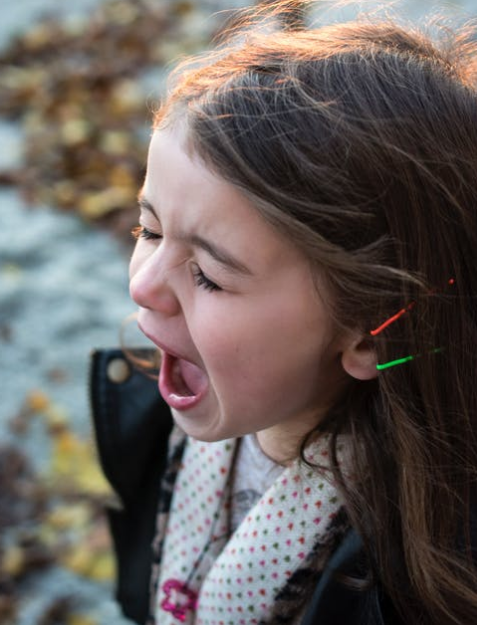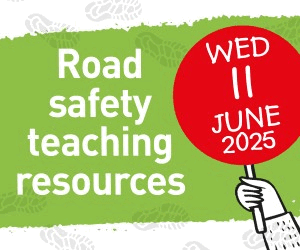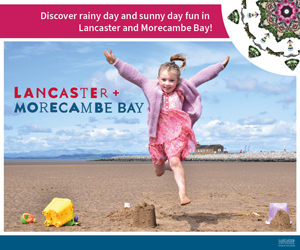Primary Times - the definitive what’s on and where to go family guide of activities and events for children of primary school age. Things to do with your kids during the school holidays including arts and craft activities, music and theatre for children, parties, competitions, days out, and family attractions along with term time drama schools, dance classes, after school clubs and sports activities. Things to do at a place near you!
Ask the expert: Why has my child had head lice for over a month?
 Head lice are a normal part of life for children and there is nothing to be embarrassed, worried or ashamed about if lice are found. However, whilst you may think you have tried every trick in the book to get rid of the infestation, there are several reasons why head lice may still be causing your child to itch and scratch.
Head lice are a normal part of life for children and there is nothing to be embarrassed, worried or ashamed about if lice are found. However, whilst you may think you have tried every trick in the book to get rid of the infestation, there are several reasons why head lice may still be causing your child to itch and scratch.
We have spoken to head lice expert Ian Burgess who has given us the nitty gritty on why children may experience head lice for over a month:
Does your child definitely have head lice?
- It is important to remember that an itchy scalp is not always a sign of head lice. Make sure you check the hair thoroughly as specks of dandruff or dirt can sometimes be mistaken for an active infestation.
- Make sure you look closely at the hair to detect tiny eggs (nits) attached to individual hair strands. They may be dead or hatched eggs from an old infection and will remain attached to the hair unless physically removed. The creamy-yellowish eggs are laid close to the scalp and blend in, but after hatching they appear white making them more prominent as the hair grows out, so if a child has had head lice in the past the dead eggs can be mistaken for a return of a head lice infestation.
- You should only use a head lice treatment once you have combed the hair from scalp to tip and found the six-legged, wingless insects.
Are you using the right treatment?
- Some parents have been known to use mayonnaise, olive oil, raw eggs and vinegar[1] to get rid of head lice, but there is no evidence to show that these remedies work to eradicate lice 2. There is a huge amount of incorrect head lice information online which gives worried parents misplaced confidence in ineffective methods. When they follow this advice, head lice are allowed to spread further and quicker.
- The key to killing lice and to truly eliminate an infestation is to use a clinically proven non-pesticide treatment or protection spray, carefully following the instructions and repeating a week later if instructed. It is then vital to check the hair every week for signs of re-infestations.
- It has been widely reported in the news that head lice have developed resistance against pesticide based head lice products – in particular those that include permethrin[2]. However, it is important to acknowledge that there is only one permethrin based head lice product on the UK market. Simply ensure you choose a non-pesticide treatment which will work by smothering the lice and either stripping them of their waxy coating, causing them to dehydrate, or disrupting their ability to manage water.
- Try a treatment containing dimeticone or octanediol as they work physically to kill lice that come into contact with them when the hair is saturated with product. Because they don’t rely on poisoning to work this means that there is theoretically no chance for the head lice to build up a resistance. If you are unsure about treatment options, speak to your pharmacist.
Are you using enough treatment and applying it correctly?
- There are various head lice treatments on the market today, with different methods of use, which can become confusing if you are trying out a new treatment. Ensure you read the instructions carefully as each product is different.
- One of the common reasons why head lice survive after treatment is because the product has not been used and applied in a correct manner. Always remember to read the packaging and follow the instructions carefully.
When you use treatment do you remember to:
- Apply it all over? It is important to apply the right amount of treatment straight onto hair, ensuring you cover the whole head and full length of hair.
- Work it in? A good tip is to use a comb or fingers to ensure the hair is covered from root to tip. The hair must be fully saturated with product to ensure every louse is smothered.
- Leave it? One of the most important and crucial tips to follow when using treatment is to leave it in the hair for the recommended amount of time.
- Wash out? Some treatments require you to wash hair as normal, but some require you to apply shampoo before wetting.
- Repeat? Some treatments require you to repeat the same process several days later, so even if you believe the infestation has gone after the first treatment, this step must be completed.
Are you following up?
- It is important to check for head lice once a week, an easy way to remember is to set a reminder on your phone to ensure you do not forget! Remember Once a Week, Take a Peek.
- To make it easier to find head lice, use a proper plastic detection comb, the recommended comb is a white one, to make the lice easily visible, with teeth no more than 0.3mm apart to trap head lice.
- Anyone can get lice - young, old, male or female. So if lice are found, ensure you inspect the heads of those around you and ask close family and friends to check as well in case the infestation has spread.
- Avoidance tactics will not stop you from catching head lice, although minimising head-to-head contact can help. Hedrin has a clinically proven head lice protection spray called Protect & Go. It helps protect children from the parasites by breaking the life cycle and killing lice before an infestation can be established. The spray is also kind to children’s hair and can be used as part of the regular hygiene regime, much the same as brushing teeth or using shampoo.
- If hatched or dead eggs (nits) are refusing to budge after using treatment, these will need to be physically removed from the hair. An effective way to ensure you remove these is to use a lubricant that releases the chemical bond between the egg and the hair, such as Hedrin’s Stubborn Egg Removal Kit.
- If you are using a treatment which requires two applications, seven days apart, make sure you remember to complete the second treatment. If you have missed killing one or two lice in the first application it is much easier to completely eradicate them with a second application after a week than to miss this process and let the problem build up again.
Re-infestations
- It is important to remember that it is common for re-infestations to occur at school or when children are in close head-to-head contact. Children put their heads together over group work and most primary schools also have two to three playtimes a day where children might be inseparable from their best friends, getting up close and chatting in the playground; all scenarios which can help head lice spread. With that in mind, schools and parents can download or request a useful pack to help manage an outbreak. The pack includes posters for schools, head lice alert cards and a letter to send to parents, as well as a parent’s guide and a family hair checking planner.
If the head lice problem is still not resolved, ask your local pharmacist for further advice.





